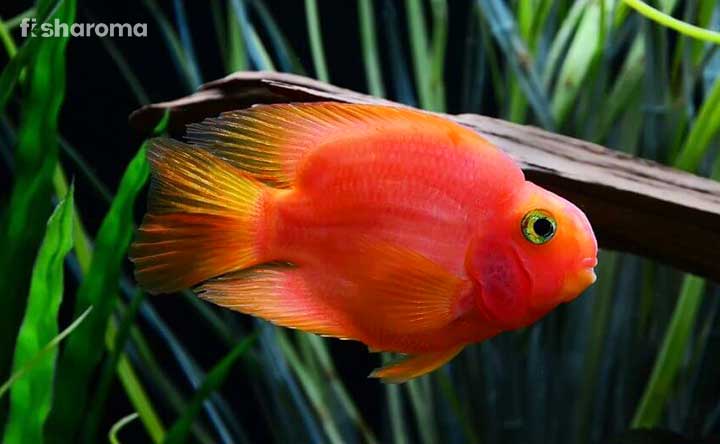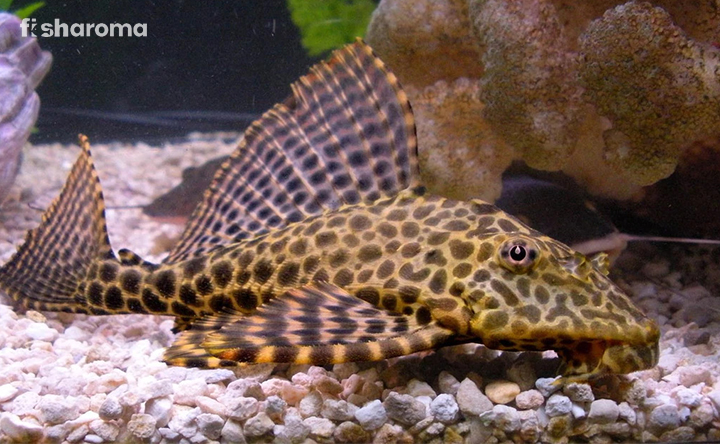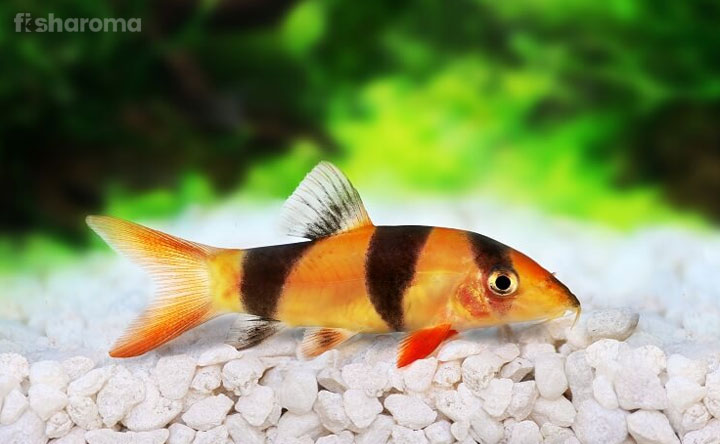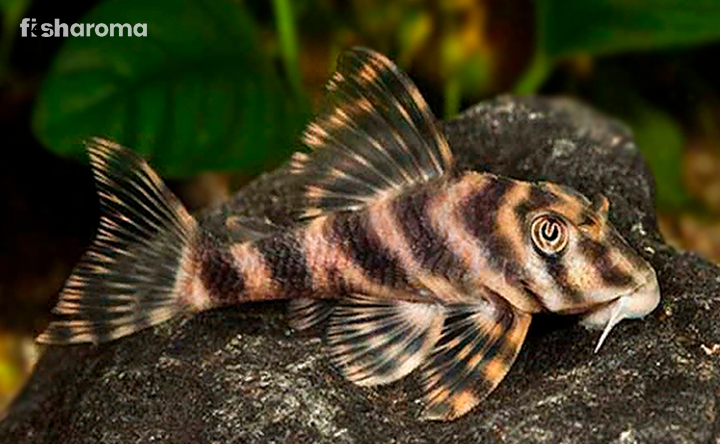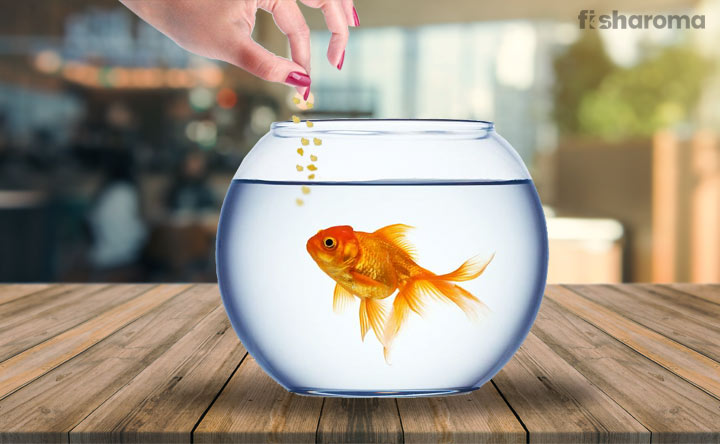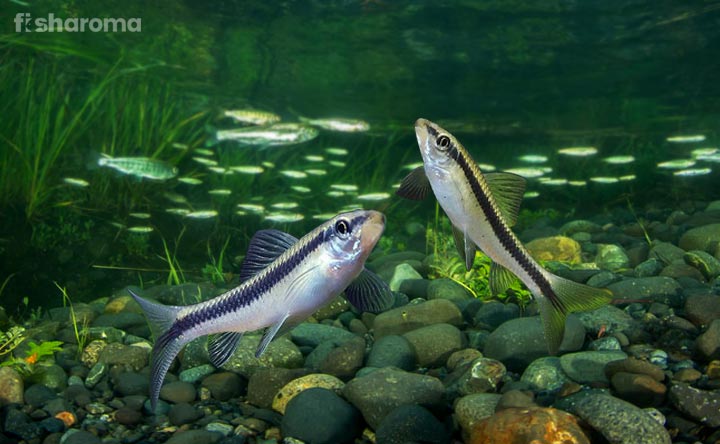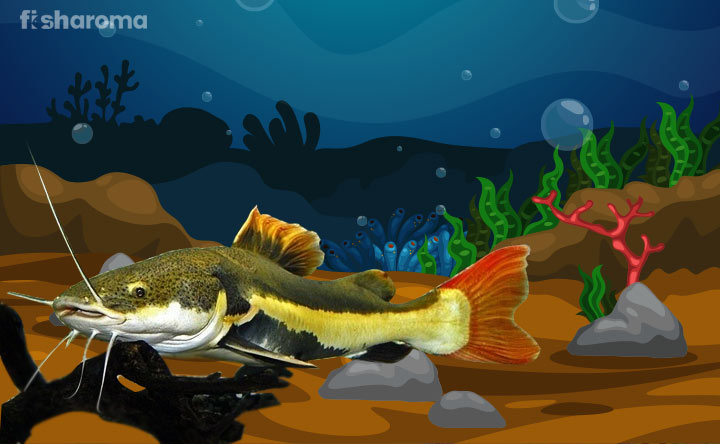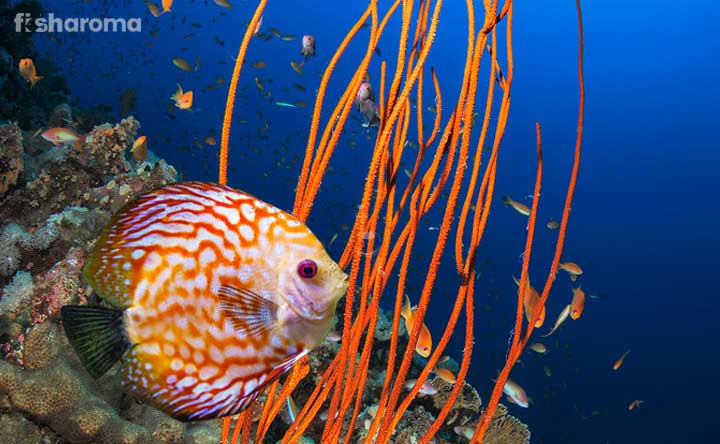Texas Cichlid Care Guide for Beginners
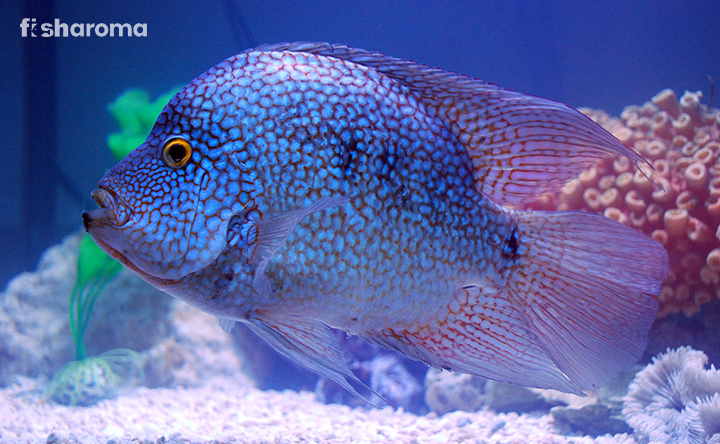
- Origin and Habitat of Texas Cichlid
- Appearance of Texas Cichlid
- Behaviour of Texas Cichlid
- Lifespan of Texas Cichlid
- Diet of Texas Cichlid
- Tank Requirements for Texas Cichlid
- Water Type for Texas Cichlid
- Compatibility of Texas Cichlid
- Breeding of Texas Cichlid
- Diseases and Treatments of Texas Cichlid
- Summary
Texas Cichlids are freshwater fishes and they are extremely intelligent. These fishes are mostly solitary but their eye-catching appearance has made them popular in the worldwide pet trade. While their maintenance level is neither easy nor difficult, rather somewhat in the middle, you will be thrilled to care for these large colourful freshwater fishes. The breeding capacity of the species has enabled breeders to go for cross-breeding of Texas Cichlid with other fishes, (mostly from other Cichlids). Not for petting, but they are also used as a game fish in many places.
If you wish to get one for yourself but are confused about the right way to take care, no need to worry! We are here to provide a compact care guide to Texas Cichlids. Here we go ahead.
Key Specifications Of Texas Cichlid
The following table is an overview of Texas Cichlid so that just looking at the table you get an accurate structural idea regarding the species.
| Also Known As | Rio Grande Perch and Rio Grande Cichlid |
| Origin | Some parts of Mexico and Texas |
| Lifespan | 10-13 years |
| Colours | Light blue, grey, and white |
| Temperament | Aggressive |
| Size | Around 12 inches |
| Diet | Omnivorous |
| Reproduction | Oviparous |
| Maintenance Requirements | Moderately high |
| Tank Size | Around 55 gallons |
Overview
Scientifically known as Herichthys cyanoguttatus, the fish is a precious Cichlid belonging to the Herichthys genus. This fish showcases a riot of shades bordering on grey, blue, and white. Due to their hostile nature, these fishes stay alone most of the time. Owing to their size and shape, they require a big tank. You might be surprised to know that these egg-laying species readily consume anything that you give.
Origin And Habitat Of Texas Cichlid
The species is indigenous to Northern Mexico and South Texas (that’s where it gets its name from). In the Texas province, the distribution of the fish is in the Rio Grande zone. It is believed to be found in the Colorado River, San Antonio, Guadalupe, and San Marcos of Central Texas. The feral population can also be observed in Louisiana and Florida.
The fish inhabits fast-flowing streams, ponds, and rivers with warm waters.
Appearance Of Texas Cichlid
The oval-shaped body has a compressed appearance with a curved base of a fin. There is a hump just above their head. In males, the nuchal humps intensify while they grow and reach maturity. Even during the breeding time, the humps are more prominent. Their dorsal fins are expandable and their lips are pretty thick and prominent.
Size
The size of an adult wild Texas Cichlid is around 12 inches. Although there have been cases when the tank bred fishes have grown to be a little smaller than their wild cousins. Male fishes have longer anal and dorsal fins and their overall appearance is comparatively bigger than the females.
Colour
In the breeding trade, it is said that there are three colour variations of the species and they are Green Texas Cichlid, Electric Blue Texas Cichlid, and Red Texas Cichlid. The truth is, these are kind of mixed breeds where one of the parents is Texas Cichlid and the other one is any members from the Cichlidae family. Here we are giving the detailed colouration of these hybrids because many aquarists don’t know the differences as breeders sell the variation by Texas Cichlid name only.
The common shade is the grey hue with a green base, especially near the abdomen and that is combined with other prominent hues like blue and green. The body showcases an ombre effect of colours, meaning a gradual effect of one colour transforming into other.
The standard body colouration of a common Cichlid has a greyish tint with some light blue undertone. The scales on the body are bluish-green, making it much similar to iridescent patterns. Their fin has the same speckled neon pattern. There are two to three prominent dark black spots on the body and in female fishes the dark spot is present on their fins. The spots are not common in all fishes and you may come across some of these exceptions.
Their fins are translucent so whenever there is any light around them, the fin looks all lit up.
While the electric blue variant of this Cichlid showcases almost the same shades and patterns as the common one, the blue shade is much fresher, lighter and close to being neon in type.
The green variant or rather the Lowland Cichlid has a greenish body with some pale or yellow dots or speckles all over the body. As far as the Red Texas Cichlids are concerned, their entire body is vibrant red with white dots all over the body.
The variants of hybrids are not purely from Texas, rather they are from different parts of the United States.
Behaviour Of Texas Cichlid
Texas Cichlids are pretty sharp when it comes to using their own mind and when they are kept inside a home setup, they can identify their owner. They can understand the feeding time and would like to interact with the owner when the individual is giving food.
The clever and jovial fish is always busy with its activity around the tank. You can spot the fish close to the bottom in one moment, and it can quickly change its position and swim as nothing has ever happened on the very next moment. They love to uproot anchored plants, check out the decorations (if any) and are always on the lookout for something interesting.
Digging is one of their favourite things and whenever they are close to the substrate they will start digging most of the time. Their temperament is rather aggressive towards other species as they like their own space. So, in a way, they are territorial as well, but if they get ideal space inside a tank, they wouldn’t showcase their temper, unless they share the tank with some incompatible mates of which we will elaborate later. (Read the Compatibility Section).
Lifespan Of Texas Cichlid
Under proper care, the fish can live for 10-13 long years. Keep in mind that if it doesn’t get proper tank conditions then the fish will live much less than its usual lifespan.
Diet Of Texas Cichlid
The fish is omnivores by nature which opens a wide range of choices for you. Make sure that you are providing the right amount of nutrition enriched food to your fish. While they can easily follow both plant-based and meat-based diets, give them something in balanced proportion. Also, to prevent overfeeding your fish, provide food only twice a day, and the quantity should be small. This is also because you don’t want any leftover food rotting inside the tank. So, a small quantity that can be consumed within two minutes is the best.
These are the foods that your Texas Cichlids can eat
- Brine Shrimps
- Daphnia
- Bloodworms
- Any other frozen shrimps or crustaceans
- Insects (larvae will also do)
- Algae-specific foods
- Blanched vegetables
- Market-ready dry flake and pellets (spirulina flake)
Any fatty food, like mammal fat, should be avoided as they don’t get digested easily. Also, if you give any frozen food, thaw them well before feeding your fish.
While giving any live food, you should always check the source of it, meaning, whether it is from a reputed breeder or not. This is because live foods always carry the chance of bacterial and parasitic infections.
Tank Requirement Of Texas Cichlid
When it comes to setting a tank for your Cichlid, you know it includes a lot of thinking beforehand. Mostly because of their digging nature, and also because of their temperamental issues. While you take care of the technical specifications of the tank in terms of its size and decoration, you must always note that keeping it clean is of utmost importance all the time.
Tank Size
The fishes are big, meaning they are as big as 1 ft, so for its easy movement, you should go for a large tank with a considerable amount of width, length, and height. For a single Texas Cichlid, at least, a 55 gallon of tank is mandatory. If you want to keep them in pairs, ideally for the breeding purpose only, then you need to set up a 125-gallon tank.
However, according to your convenience, you can always go for a bigger tank, because we all know how important space is, and it is never too much for us. Same with the Texas Cichlids, they would appreciate the extra space and wouldn’t let you down with its busy activities.
Tank Lid
A lid should be well-adjusted so that the external dirt can’t enter the tank. This is because the fish can’t tolerate polluted water and it will show signs of illness or stress if the water becomes poor.
Also, at the same time, you can easily move the lid when it’s feeding time.
Substrate
The bottom should contain fine gravel or sand so that it acts as a potential digging ground for the fish. The sand would be ideal as the fish loves making burrows and it will also reflect the natural habitat of the fish which is mostly river beds.
Filter
To clean the water and to maintain a medium flow, you need to place an external strong Canister Filter.
Ornaments
The fish loves mental stimulating things, which will give it something to play with. So, while you are planning to decorate the tank, incorporate things like driftwoods, bogwoods and other types of hiding structures. Such driftwoods will also maintain the acidic level of the tank to some extent.
You may use clay pots or other such things to use as hideouts. Such hiding locations alleviate the mood of the fishes, especially when they require some private moments. Large rocks can also be used so that they can offer shelter for the fishes.
Lighting
Lighting is more important for you than it is for the fish. As the fish can “glow” because the pearly spots and the scales all have some neon nature, especially when there is light around. To make them shine like this, you need some moderately soft lights.
Present Of Flora
Aquascaping is important but challenging as the fish is known for uprooting plants. So choose the ones that are really strong, lowlight plants, and won’t decay even if the fish wants to pull them up. Juvenile fishes can use such plants as their retreat every now and then.
Artificial or floating plants can also be ideal alternatives to real plants. Apart from the decorative purposes, these plants beautifully subdue the tank light, creating a suitable surrounding for the fish. Just like its natural surrounding where the vegetation acts as a canopy, the floating ones will act like that in the tank.
Cleaning Method
The fish thrives in clear water and by that it means hygienic water, free from any sort of pollutants and dirt. You should clean the ornamentation of the tank with a towel. Clean the tank from every possible side if you see any spots on them by rubbing them off.
You can trim the plants so that they don’t overpower the swimming space of the fish in the tank.
Replacement Procedure
There is a lot of mess around the fish because it is always eating something or the other. So, weekly water change is recommended on an extensive basis.
Water Type For Texas Cichlid
The Texas Cichlid thrives in acidic warm water in their natural setting. So, when you are arranging the tank, ensuring the below-mentioned parameters is a must.
Temperature
The perfect water temperature should be 20 Degrees Celsius to 26 Degrees Celsius. You can set a heater if you wish to maintain the warmth of the water, especially during winter.
pH Level
The acidic level of the water should be within 6.0-8.0.
Hardness
The general hardness of the water should be 5-15 dGH.
Compatibility Of Texas Cichlid
Texas Cichlids are territorial and in general hostile towards other fishes. Though juvenile fishes can coexist with other larger species, who don’t disturb each other, by the time these Cichlids are grown up, they are not welcoming towards other fishes.
Suitable Tank Mates
Although it is best to keep the Texas Cichlid alone on its own, you can try pairing them up with the following, but at your own risk because their nature is unpredictable.
- Giant Gourami
- Types of Pleco Species
- Jack Dempsey Cichlid
- Ram Cichlid
- Convict Cichlid
- Green Cichlid
They might deal with other aggressive species well, but everything depends on their mood.
Unsuitable Tank Mates
Small, docile or gentle fishes are completely unsuitable for these cichlids. There are times when a male fish shows aggression towards other tank mates, that includes their female breeding partner as well. The aggression is so fatal that it is life-threatening at times.
So, we suggest, you keep a single Cichlid inside the tank and keep a pair for the breeding purpose only.
Breeding Of Texas Cichlid
If you are setting a separate breeding tank along with a breeding pair, make sure the fishes are given protein-enriched food. There are some water parameters that you should ensure so that the breeding is further encouraged. Although these species can breed easily without any further association.
The water should have a pH level of 7, along with a general hardness ranging from 5-12 dGH. The temperature can be ranging from 25-28 Degrees Celsius. If you keep multiple Cichlids, then they can choose the mating pair on their own.
The breeding starts with the male fish starting to flirt with the female fishes. Their colour will change drastically during their breeding time. Like, the head will be white and the belly will be black. They can chase each other playfully and eventually, their mating ritual includes locking their lips and making some tail movements.
The eggs are released in around 500-1000 numbers and they are guarded by their parents for 3 days. Then the eggs will hatch and the young fishes or “Fry” will start swimming after around 4-5 days.
Diseases And Treatments Of Texas Cichlid
The disease that can mostly attack a Texas Cichlid is fin rotting and ich. While the former one is due to any cuts or wounds, the latter one is a sign of parasitic infection. In both cases, you need to separate the fish from their tank and keep them in a healing aquarium so that the current water quality of the tank doesn’t further deteriorate the condition of the fish. For healing fin rotting, over-the-counter antibiotics should be given, but only after a vet’s suggestion. They can be obese if fed more than enough.
Maintaining the water quality and the basic hygiene level should be the prime focus so that your pet is not exposed to any kinds of possible ailments.
Summary
The loner fish, with its aggressive nature, has something that wins the hearts of fish lovers. The mesmerizing neon looks will be good enough for a big fish tank. Feeding them is easy and keeping them alone is not a hassle either. They would also appreciate all the decorations around them inside the tank. So, isn’t it a very reciprocating fish that deserves your love? Think about it.
Other Similar Care Guides
- Moonlight Gourami – The species is a freshwater fish and its native land is South East Asia. The beautiful look of the fish makes it a hot favourite of aquarists.
- Rainbow Shark – The fascinating shark has a semi-aggressive nature. The omnivorous fish can easily live for 5-8 years.
- Firemouth Cichlid – This fish has its origin in Central America and it is blessed with a long lifespan of around 15 years. This is a semi-aggressive fish and it is omnivorous.

